Can Planting Trees Solve Climate Change?
11 minute read
Updated on: 01 Sep 2021
You might have heard that planting trees can remove CO₂ from the atmosphere . But are trees alone enough to stop climate change? Let’s find out.
How do trees store CO₂?
Trees take in carbon dioxide through a process called photosynthesis. This is where plants use energy from the sun, carbon dioxide, and water to make food . Some of this absorbed carbon is released back into the atmosphere through respiration (the process used by living things to get energy from their food). The rest is stored in the tree’s leaves, trunk, and roots
.

Photosynthesis at work!
Every year trees capture about 2.4 GtCO₂ from the atmosphere - that’s about 6% of our total yearly CO₂ emissions
! However, deforestation is reducing the number of trees worldwide, meaning less CO₂ can be absorbed
.
Although humans have been cutting down trees for thousands of years, the rate has dramatically increased over the last century ; between 1990 and 2016, an area of forest larger than South Africa was lost
.
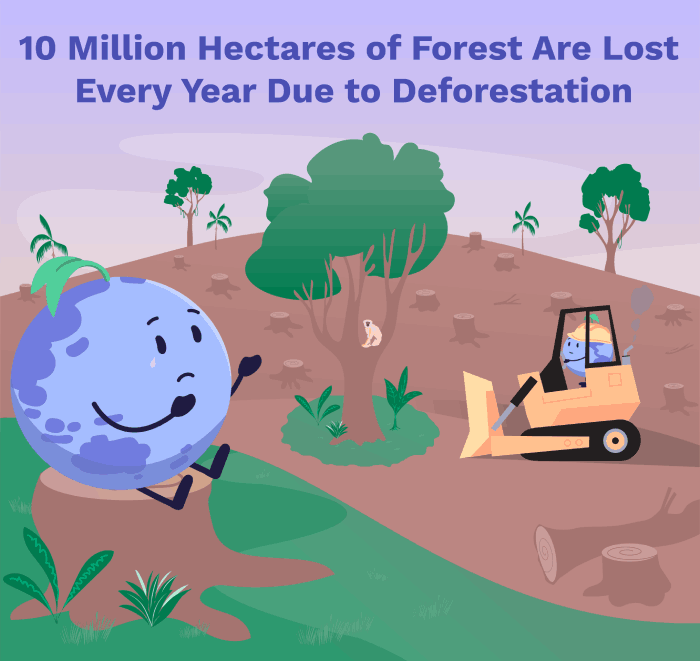
Deforestation
One way to absorb more CO₂ from the atmosphere is to plant more trees . There are two main ways to do this:
- Afforestation involves planting entirely new forests. This means trees are planted on land that has not recently been forested (typically for at least 50 years)
.
- Reforestation involves replanting forests where they have recently been lost (typically for at least 50 years)
.
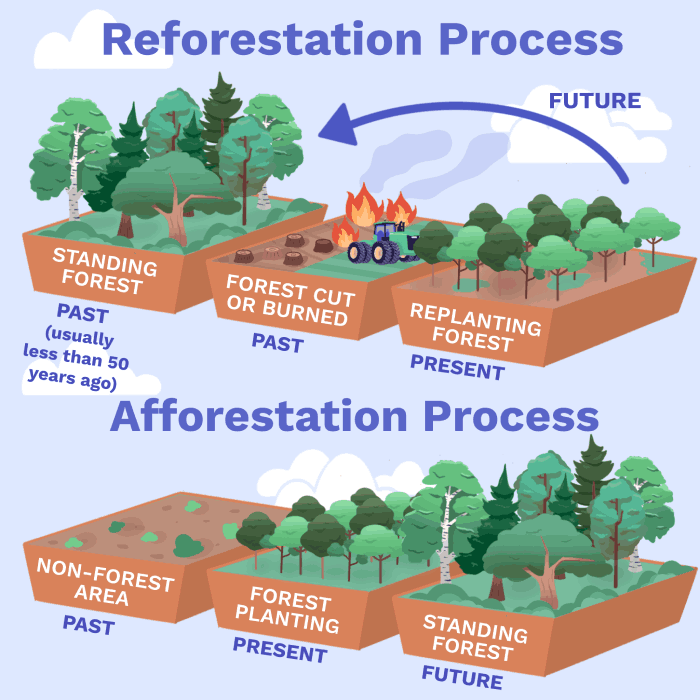
Afforestation vs Reforestation
Depending on how much extra CO₂ is stored, tree planting and conservation can be an effective way to remove CO₂. However, measuring the amount of CO₂ stored is often very complicated and can depend on many variables.
Where should we plant trees?
Trees interact with the climate in complex ways. It, therefore, matters a great deal what type of trees are chosen and where they are planted.
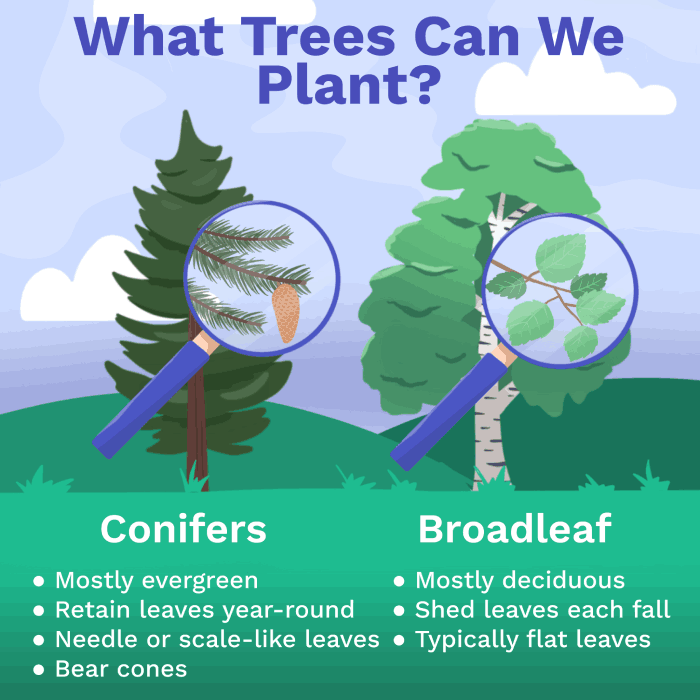
Different tree types
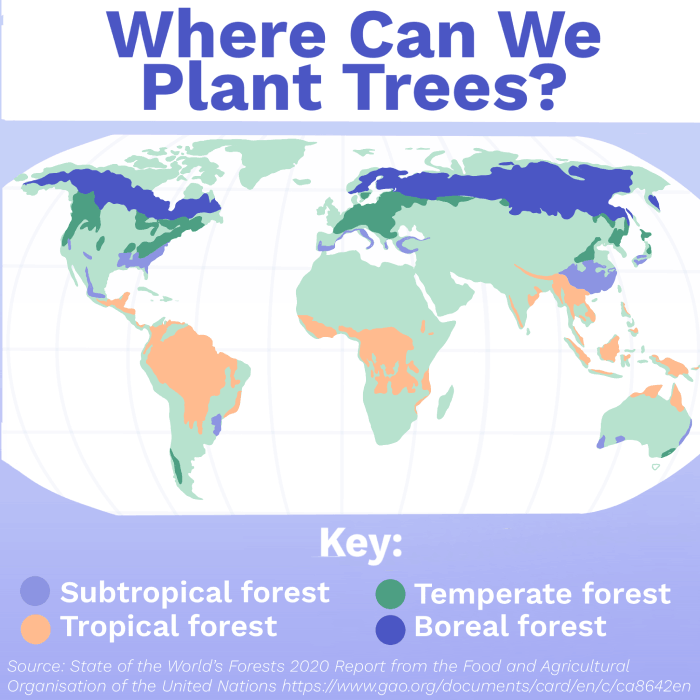
Different forest locations
One of the most important considerations is how much light and heat energy from the sun is absorbed by the trees . This is described by the albedo effect: how much light a surface reflects compared to the total sunlight falling on it
.
A lower albedo means less light and heat energy is reflected, and more is absorbed on the Earth’s surface, accelerating warming .
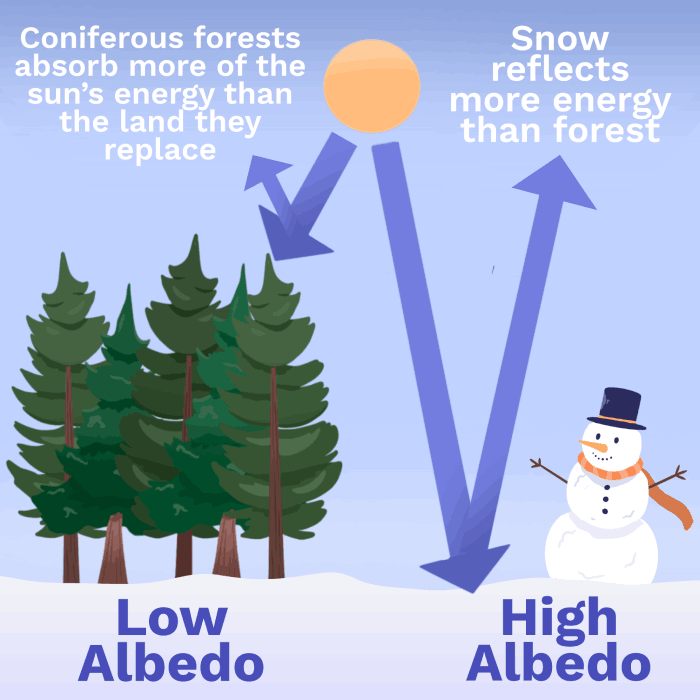
Albedo decrease from tree planting
The low albedo of boreal forests compared to the snowy land they replace means that planting trees in the far North or far South can speed up local warming. Unfortunately, this means more ice and snow melting - the opposite effect of what we wanted! .
Planting deciduous trees in temperate regions has more complicated effects on global temperatures. Their leaves are more reflective than conifer trees, and, in the winter, their leaves are lost, allowing light to be reflected by the (often snowy) ground below .
They also release more water into the air during the summer than coniferous trees, creating clouds that reflect energy from the sun and reduce surface temperatures . However, they often replace farmed land, which would have a higher albedo (reflect more energy) without the trees
.
The greatest potential for reducing overall temperatures comes from planting trees in the tropics . These regions receive more of the sun’s energy, so trees grow and absorb CO₂ more quickly. They also release lots of water vapour, which forms clouds that produce a cooling effect. This outweighs any decrease in albedo
.

The impacts of different tree types
How does planting trees affect other plants and animals?
Planting just one type of tree can cause problems for other plants and animals, which often depend on a variety of trees for food or shelter . Therefore, it is vital to plant lots of different species, to mimic the diversity of natural forests
.
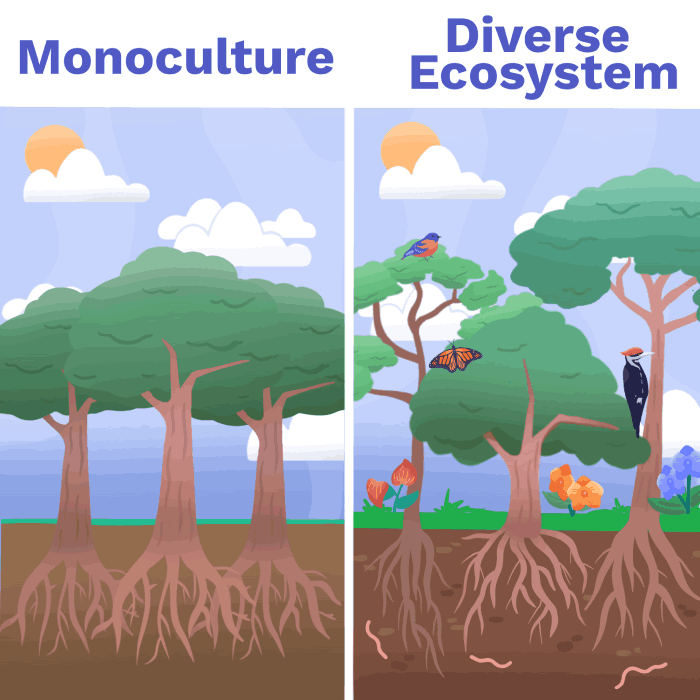
The number of different tree species planted matters
Even when planting lots of different types of tree, you still have to be careful about exactly which trees you plant. While reforestation is usually done with local tree species, afforestation often brings in species from other places, which could get out of control. If this happens, they may out-compete local trees and plants for food, water, and space, thus reducing local biodiversity and potentially disrupting whole ecosystems .
Restoring a region’s natural forests can also be challenging; for example, the soil quality may have changed and may no longer support local species .
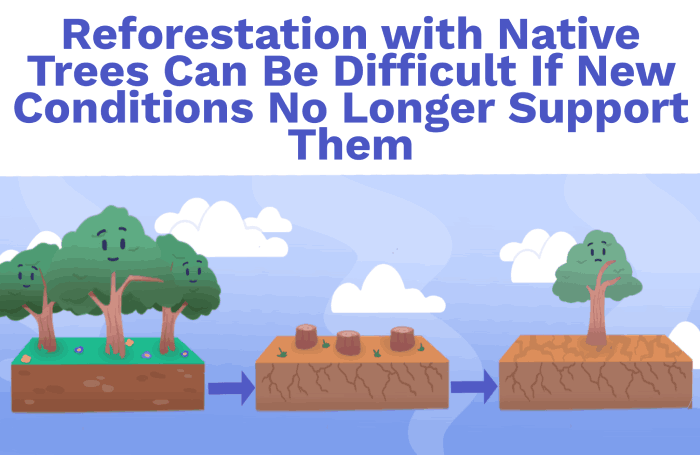
Problems with reforestation
The changes caused by deforestation are often irreversible; therefore, it is almost always better to protect trees from being cut down in the first place .
What does planting trees mean for society?
Planting trees requires a lot of land . This means there will be less land available for farming, potentially making it harder to produce enough food and increasing food prices
.
One partial solution to this would be to use agroforestry, where trees and food are grown together on the same land .
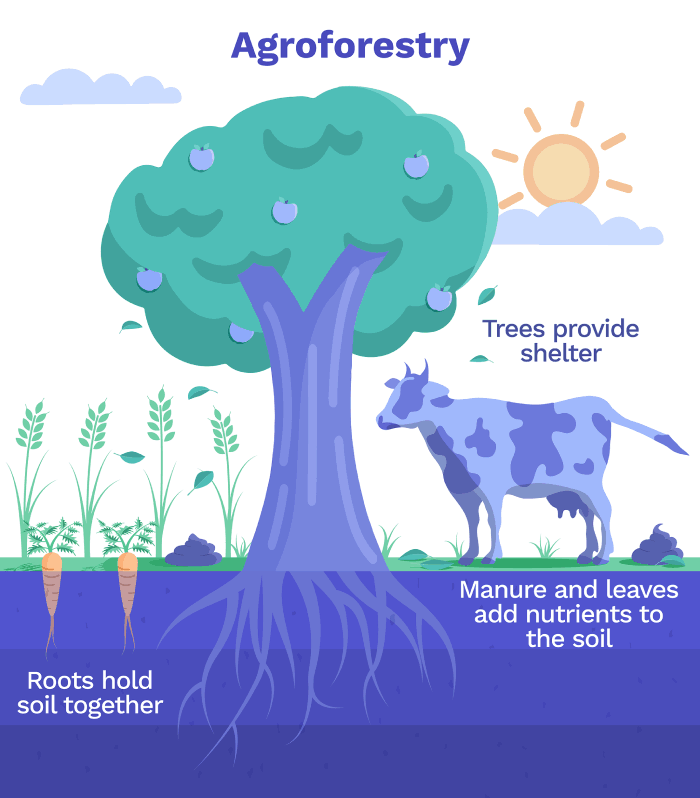
Agroforestry could reduce the competition for land
Trees can provide other benefits too:
- Protect soil from erosion and improve the soil’s ability to store nutrients and water
- Protect places from flooding
- Reduce the impact of heatwaves by providing shade and cooling the surrounding air when water evaporates from their leaves
How much will it cost?
In some places, planting trees is a very cheap way to remove atmospheric carbon . This is usually in areas where land prices are low and other activities, such as logging, can pay for some of the cost of planting and looking after the trees
. In these cases, it can cost as little as US$2/tCO₂
.
The more trees that are planted, the more expensive it is likely to become. This is because less land will be left, so it will be more costly to buy .
If we were to only plant trees on unused land in lower and middle-income tropical countries, where land prices are less and more carbon dioxide can be captured, we get a range of costs of US$5/tCO₂ to $50/tCO₂ .
However, we would need to make sure that these countries are not left bearing all the costs. Given that high-income countries have historically produced (and still produce) a greater share of global emissions, the burden should fall on them to cover the costs of these projects.
How much CO₂ can tree planting remove?
In 2019, we emitted about 36 GtCO₂ .
Estimates for carbon removal by 2050 range from 0.5–7 GtCO₂ per year ; for 2100, the range is 1–12 GtCO₂ a year
.
We also need to think about how long forests will continue to absorb carbon dioxide. Forests can be affected by natural and human disturbances, such as :
- Drought
- Forest fires
- Pests (which may be made worse with climate change)
- Sudden changes in land use (e.g. deforestation)
These disturbances can sometimes release vast amounts of CO₂ . What’s more, forests reach a stable size after a few decades or centuries, meaning, they can’t absorb extra CO₂ from the atmosphere anymore.
At the end of the day, protecting existing forests is always a better option . This is because forests are much more than just their trees and are made up of intricate networks above and below the soil that takes years, if not decades, to form
. These complex networks enable ancient forests to absorb more CO₂, and the trees in these systems are also usually more resistant to droughts, fires, and storms
.
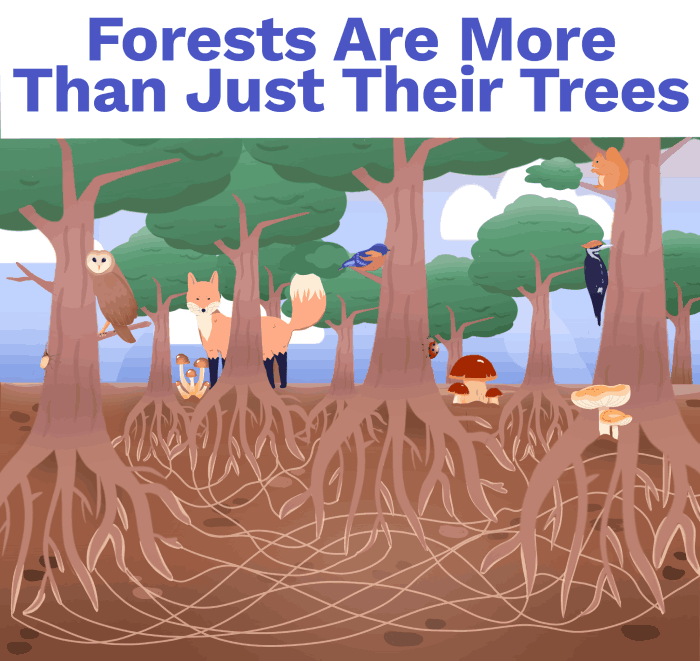
Forests are intricate networks that take decades to form
What about other types of ecosystems?
These ecosystems store more carbon dioxide over the long term per unit area than land-based forests and have other significant benefits too .
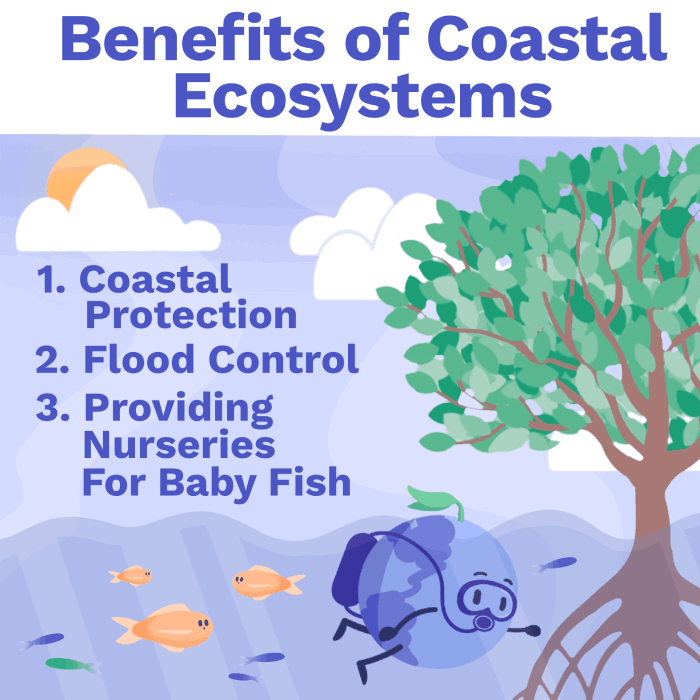
Coastal ecosystems do much more than just absorb CO₂
Most conservation efforts look to protect these ecosystems in order to reduce the emissions of their stored carbon dioxide going back into the atmosphere .
However, research is increasingly looking into rebuilding damaged coastal wetlands in order to store more CO₂ .
It is estimated that this restoration could absorb an additional 0.84 GtCO₂e/year .
However, it is still unknown how much CO₂ seagrasses and wetlands really sequester, so we should be cautious of this estimate .
Conclusions
As well as removing CO₂, working to restore nature can provide lots of benefits to people and the environment and can be done with existing technology at a low cost ! However, these projects must be carried out with lots of care to avoid damaging existing ecosystems and people’s lives
. Therefore, planting trees will not be a silver bullet for solving climate change; rather, it should be seen as an essential piece of a much larger puzzle.
So what other natural climate solutions exist? Onwards to the next chapter!
Next Chapter